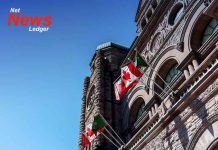Public Health Units to Gradually Return to the COVID-19 Response FrameworkTORONTO — In consultation with the Chief Medical Officer of Health, the government is moving to a regional approach and maintaining the shutdown in the majority of the public health regions in Ontario, including the Stay-at-Home order and all existing public health and workplace safety measures. When it is safe to do so, the province will gradually transition each region from the shutdown measures to a revised and strengthened COVID-19 Response Framework: Keeping Ontario Safe and Open (the “Framework”). Details were provided today by Premier Doug Ford, Christine Elliott, Deputy Premier and Minister of Health, Solicitor General Sylvia Jones, and Dr. David Williams, Chief Medical Officer of Health. “Our number one priority will always be protecting the health and safety of all individuals, families and workers across the province,” said Premier Ford. “But we must also consider the severe impact COVID-19 is having on our businesses. That’s why we have been listening to business owners, and we are strengthening and adjusting the Framework to allow more businesses to safely reopen and get people back to work.” To support the province’s economic recovery, the government has updated the Framework to allow for a safer approach to retail. Limited in-person shopping in Grey-Lockdown zones will be permitted with public health and safety measures, such as limiting capacity to 25 per cent in most retail settings. In addition, public health and safety measures in retail settings will be strengthened for other levels of the Framework. Individuals will also be required to wear a face covering and maintain physical distance when indoors in a business, with limited exceptions. Other measures include a requirement for individuals to wear a face covering when attending an organized public event or gathering (where permitted) if they are within two metres distance of another individual who is not part of their household (both indoor and outdoor). All other requirements for gatherings and organized public events would be maintained. Based on the improving local trends of key indicators, including lower transmission of COVID-19, improving hospital capacity, and available public health capacity to conduct rapid case and contact management, the following three regions will be moving back to the Framework at the Green-Prevent level on Wednesday, February 10, 2021 at 12:01 a.m. and will no longer be subject to the Stay-at-Home order:
Due to the fact that public health trends are improving in some regions faster than others, the current Stay-at-Home order will be amended and individual orders making it applicable to each public health region will be made except for the three above. It is proposed that the Stay-at-Home order will continue to apply to 28 public health regions until Tuesday, February 16, 2021. For Toronto, Peel and York regions, it is proposed that the Stay-at-Home order will continue to apply until Monday, February 22, 2021. Final decisions will be subject to review of the trends in public health indicators at that time. “While we have seen some progress in our fight against COVID-19, the situation in our hospitals remains precarious and the new variants pose a considerable threat to all of us,” said Minister Elliott. “As we cautiously and gradually transition out of the provincewide shutdown, we have developed an emergency brake system giving us the flexibility to contain community spread quickly in a specific region, providing an extra layer of protection.” Recognizing the risk posed by new variants to the province’s pandemic response, Ontario is introducing an “emergency brake” to allow for immediate action if a public health unit region experiences rapid acceleration in COVID-19 transmission or if its health care system risks becoming overwhelmed. If this occurs, the Chief Medical Officer of Health, in consultation with the local medical officer of health, may advise immediately moving a region into Grey-Lockdown to interrupt transmission. “While we are seeing our numbers trend in the right direction, our situation remains precarious as the variants of concern remain a serious risk,” said Dr. Williams. “This is not a re-opening or a ‘return to normal’ and we must continue to limit close contact to our immediate households and stay at home except for essential reasons. By continuing to follow all public health and workplace safety measures, we can continue to reduce the number of new cases and the strain on our health system.” In addition, the provincial emergency declared under s 7.0.1 of the Emergency Management and Civil Protection Act (EMPCA) will be allowed to terminate at the end of February 9, 2021. While the provincewide Stay-at-Home order will cease to apply in some regions as of February 10, 2021, everyone is strongly advised to continue to stay at home, avoid social gatherings, minimize travel between areas with different rules, and limit close contacts to their household. Employers in all industries should continue to make every effort to allow employees to work from home. Enforcement of residential evictions will remain paused in the public health unit regions where the provincial Stay-at-Home order remains in effect. This will ensure people are not forced to leave their homes. In regions where the Stay-at-Home order is lifted, the regular process for residential eviction enforcement will resume. Orders currently in force under the EMCPA have been extended to February 23, 2021 and will be extended further if necessary. O.Reg.55/21 (Compliance Orders for Retirement Homes) is currently in effect until February 19, 2021. “While the declaration of emergency will be ending, the risks posed by COVID-19 and the new variants remain serious concerns,” said Solicitor General Jones. “That’s why extending the stay-at-home orders for most of the province is necessary to protect our communities, our most vulnerable populations, and stop the spread of COVID-19. We continue to urge all Ontarians to follow public health guidelines and stay home, stay safe, and save lives.” The Chief Medical Officer of Health will continue to consult with public health and other experts, review data, and provide advice to the government on the appropriate and effective measures that are needed to protect the health of Ontarians. Municipalities and local medical officers of health may have additional restrictions or targeted requirements in their region. |
QUICK FACTS
|






